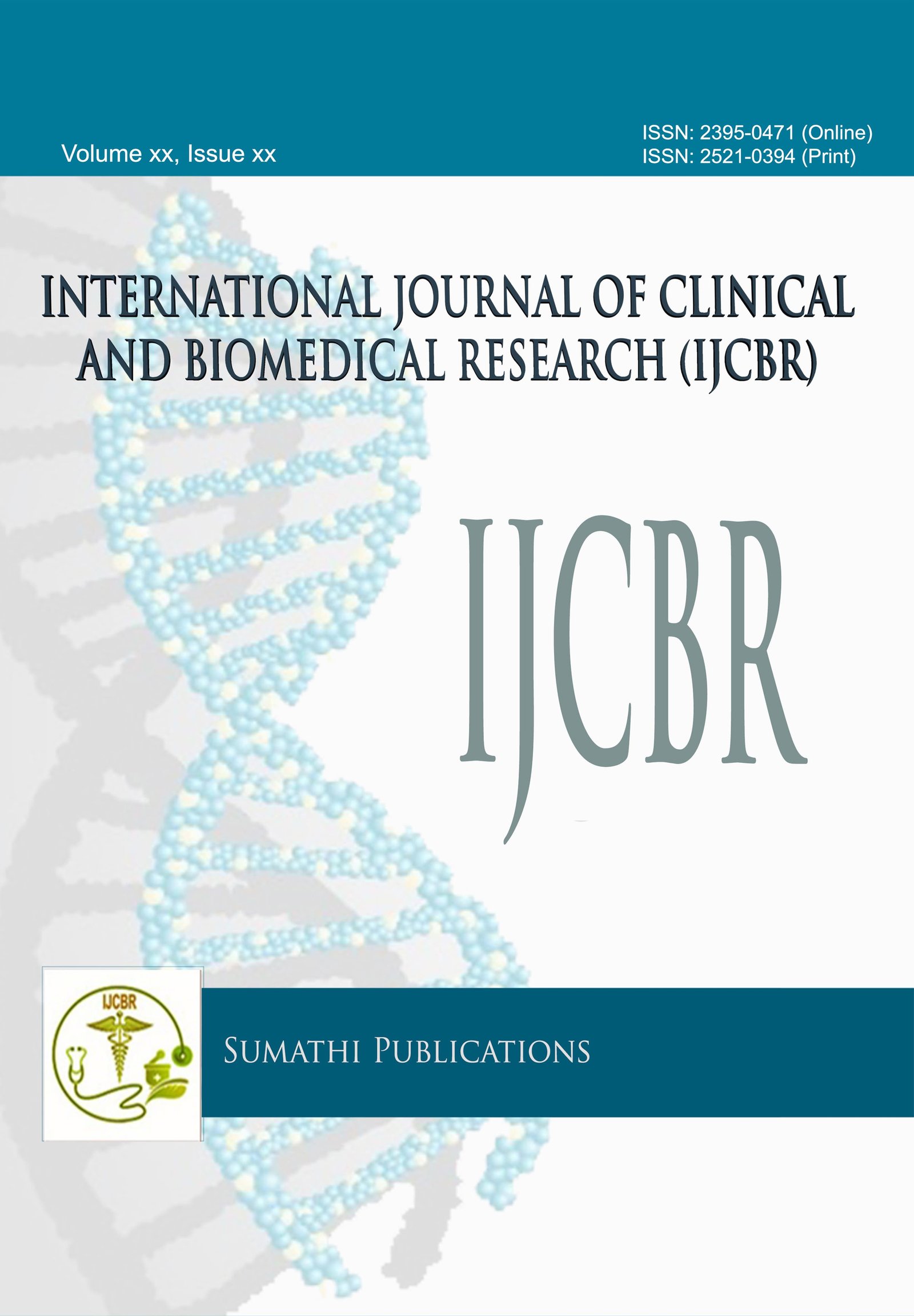EFFECTS OF COGNITIVE BEHAVIORAL THERAPY (CBT) AND MEDITATION IN CHRONIC LOW BACK PAIN
DOI:
https://doi.org/10.31878/ijcbr.2020.64.02Keywords:
Key words: Cognitive, Behavioral, Meditation, Chronic, Low, BackAbstract
Abstract –
Context: Chronic low back pain (CLBP) is a highly prevalent and often disabling condition among adults. Meditation is a practice which uses a technique like mindfulness, or focusing their mind on a particular thought, activity - to train awareness, achieve a mentally clear and emotionally calm state. Cognitive – behavioral therapy (CBT) is a form of psychotherapy that has been documented to be effective in treating depression, chronic pain and other mental disorders.
Aim: To compare the effects of both, CBT and Meditation on pain management in CLBP.
Method: 27 patients with CLBP between the age group of 36-50 yrs were selected. They were divided into 3 groups. A 4 week intervention of conventional physiotherapeutic exercises, Meditation and CBT was given. Oswestry Low Back Pain Disability Questionnaire and Numerical Pain Rating Scale were used as outcome measures.
Results: Our study shows significant results pre and post all interventions, but no significant difference can be seen when the three interventions are compared to each other (with p<0.05)
Conclusion: On the basis of the result obtained, we can say that all three interventions have a positive effect in pain reduction in CLBP.Statistically, no intervention has a better effect over others. But clinically meditation group performed better.
Downloads
Downloads
Published
Issue
Section
License
The journal allows the author(s) to hold the copyright without restrictions and will retain publishing rights without restrictions.
The submitted papers are assumed to contain no proprietary material unprotected by patent or patent application; responsibility for technical content and for protection of proprietary material rests solely with the author(s) and their organizations and is not the responsibility of the journal. The main (first/corresponding) author is responsible for ensuring that the article has been seen and approved by all the other authors. It is the responsibility of the author to obtain all necessary copyright release permissions for the use of any copyrighted materials in the manuscript prior to the submission.
What are my rights as an author?
It is important to check the policy for the journal to which you are submitting or publishing to establish your rights as
Author. Journal's standard policies allow the following re-use rights:
- The journal allows the author(s) to hold the copyright without restrictions.
- The journal allows the author(s) to obtain publishing rights without restrictions.
- You may do whatever you wish with the version of the article you submitted to the journal.
- Once the article has been accepted for publication, you may post the accepted version of the article on your own personal website, your department's website or the repository of your institution without any restrictions.
- You may not post the accepted version of the article in any repository other than those listed above (i.e. you may not deposit in the repository of another institution or a subject-matter repository) until 12 months after publication of the article in the journal.
- You may use the published article for your own teaching needs or to supply on an individual basis to research colleagues, provided that such supply is not for commercial purposes.









